Meet the managing director: Alistair Robertson
When it comes to golf, Aberdeen is unusual in its assets and also in its approach to their management. Alistair Robertson, managing director of Sport Aberdeen, explains how Golf Aberdeen, the agency that manages the city’s golf facilities on behalf of Aberdeen City Council, is building a vibrant future for municipal golf on the foundations of an illustrious past.
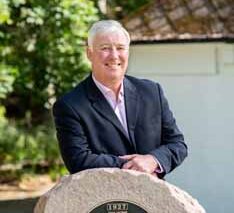
Municipal golf is a term that comes with some baggage. Even in Scotland, where the traditions of locally owned and managed courses is more firmly embedded than in most of the rest of the UK, municipal golf carries some negative connotations.
However, in Aberdeen, where the city owns and manages four 18-hole courses and several other golf facilities across three separate venues, the idea of public courses being among the very best courses available has held its own and, with a new strategy for the game being implemented by Golf Aberdeen, municipal golf is fighting back.
Alistair considers that public golf plays a very important role on a golfer’s journey; “Most golfers start to learn the game on these courses, and they are accessible for all, especially where cost is concerned. While the Old Course in St Andrews is the best-known public course in the world, and the fact that PGA Tour also uses municipal courses, public courses are not always appreciated.”
Aberdeen’s golf courses are not an anomaly. The city has a long tradition of taking and demonstrating great pride in its parks and horticulture. Under the watchful eye of the park’s superintendent, the city’s golf courses were built and maintained to the very highest standards as a matter of civic pride. That its four publicly owned 18-hole golf courses included some of the oldest and most historically significant courses to be found anywhere, home or abroad, was as it should be, a reflection of Aberdeen as one of Great Britain’s great cities.
Although so much has changed within local government in recent times, this legacy of golf as part of the city of Aberdeen’s heritage remains intact. The challenge for Golf Aberdeen, the organisation charged with responsibility for the city’s golf facilities on behalf of Aberdeen City Council, has been to decide how this legacy is best managed and maintained to make it sustainable. Alistair confirms; “We have worked very hard in recent years to upgrade the courses we operate, and I believe what we offer to the golfers of Aberdeen can and does compete with that of local private clubs.”
It may seem outlandish now but in the early 1920s the city had been able to commission one of the world’s most celebrated golf course designers in Dr Alister MacKenzie, to build a course on the city’s own land. It was the most expensive course built in Britain at the time. Almost a century later, such large-scale capital investments are rare in local government and the presence of several celebrated golf courses in the city council’s portfolio creates something of a dilemma. In times of local authority retrenchment do such assets represent a threat or an opportunity? Is the city of Aberdeen’s affinity with the game of golf now a bounty or a burden?

There are no easy answers but, having carefully considered the questions, Golf Aberdeen has embraced the opportunities this legacy presents. With the support of the city council and its various stakeholders, Golf Aberdeen devised a five-year strategy based on investment, engagement and promotion. The aim was to get the best possible use of these exceptional assets and develop a long-term future for golf in the city. Although still in the initial phases of implementation, it is a strategy that is beginning to achieve results.
The strategy’s starting point was the courses themselves. Even in Scotland it is rare, perhaps unique, to find four courses of such quality, variety and history in such proximity. A few minutes from the city centre is Balnagask, which is situated in a conservation area with stunning coastal scenery. Widely recognised as one of the best municipal 18-hole courses in Scotland, Balnagask includes the names of Archie Simpson, James Braid and Hawtree and Son among those involved with the layout and subsequent redesigns since its foundation in 1905.
Hazlehead has two courses set within its parkland, the Pines course and the MacKenzie Championship course. The Pines was extended in the early 1970s by a design team led by Brian Huggett, Neil Coles and Roger Dyer, then among the very biggest names in European golf.
Its sister course, the MacKenzie, is rather more challenging. Laid out in the 1920s by Alister MacKenzie, whose portfolio included Augusta National, Cypress Point and Royal Melbourne, it remains a championship course in both name and character.
Down by the beachfront, in the heart of the city, is the Kings Links, first developed into a course in 1872 and with a history that stretches back to 1780 when it was part of one of the first proper courses laid out for play; there is also evidence to suggest that golf was played here a century and a half before that.
While these courses comprise a remarkable and important asset for the city, Golf Aberdeen was all too aware that if this history was to have a future it had to meet the needs and expectations of the modern golf environment.
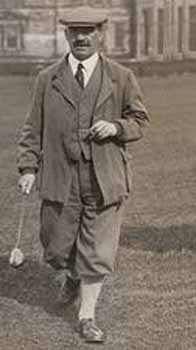
Alister MacKenzie
One of the first strands of Golf Aberdeen’s strategy was a recognition that achieving and sustaining the highest possible standards in course maintenance was essential to any future success. Investment in raising the standards of the courses, with a focus on the greens, golf’s equivalent of the acid test, was therefore one of the first stages of implementation.
After a couple of years of concentrated attention on maintenance issues, including some major investment in the drainage systems at Hazlehead, all of the city’s courses are now noticeably improved after £500,000 of added investment. This was a significant commitment by the charity, a point not lost on European Tour golfer, David Law, who played the MacKenzie Championship after golf returned from lockdown.
He said “The course was in great shape, the greenest and driest I’ve ever seen it! The protocols put in place by Golf Aberdeen were really easy to follow and it was fantastic to see so many people out and enjoying golf again safely. Huge credit to Golf Aberdeen for getting us all out there today. I’ve got a few weeks left at home before the European Tour starts up again and having Hazlehead on my doorstep will really help get my game sharp for the restart.” Paul Lawrie has also played recently, another great endorsement.
However, just when things were going so well, the Kings Links Course was forced to close following the erroneous chemical application to the greens, coupled with flood damage caused by a burst sewage pipe following torrential rainfall in the city.
Alistair explained what happened; “Unfortunately, there was a mix up in chemicals which led to greens being sprayed inappropriately. It shows how quickly things can turn and as all in the industry know, a course is judged by its greens, so this was a disaster and we had to shut the course mid-August.
“I met with the managing director of the golf course maintenance company, idverde, to consider options. He accepted full responsibility and confirmed that the course would be fully reinstated regardless of cost and immediately appointed an STRI specialist to oversee the work.
“Additional greens staff have been brought in along with an extra head greenkeeper to focus on this work. This has allowed us to reopen the course with the main greenkeeping team preparing enhanced temporary greens, so the clubs can get some golf. Medals and club competitions have been relocated to one of our other courses, which has been appreciated by clubs.

“idverde’s response could not have been better, and I am grateful for that which emphasises the benefit of our partnership approach, which is considered unique within the industry. The ‘specification’ and ‘client / contractor’ mentality has long been abandoned, replaced by a strategic approach that ensures the necessary greenkeeping expertise and experience is applied at all courses. They have also committed to undertaking additional improvement works to enhance the course in part compensation for the incident. I am confident that it will be back better than ever in the spring.”
Q&A with Alistair Robertson
Can you tell us a bit about Sport Aberdeen / Golf Aberdeen – how did it come into existence and what does it do?
Sport Aberdeen is an award-winning registered charity created ten years ago to manage, develop and operate all the sport and leisure facilities and programmes in the city. Referred to as a leisure trust, we have an extensive portfolio of 30 facilities, a broad range of sport and physical activity development programmes which employs over 600 people. We also have responsibility for the strategic planning framework for sport and leisure, including its infrastructure. Our turnover in 2019/20 was £14 million.
What makes Sport Aberdeen different from many other sport and leisure providers is the fact that every pound generated is reinvested back into the communities we serve.
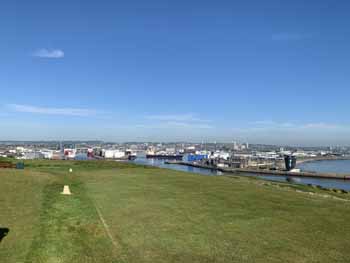
Our golf division, Golf Aberdeen, was rebranded in 2014 as part of a five-year development plan, focused on two key objectives; improve the quality of the courses and the playing experience, and grow the membership. It manages four of the most stunning public 18-hole golf courses in the UK; the MacKenzie Championship Course, Hazlehead Pines, Balnagask and Kings Links, plus a fantastic nine-hole course at Hazlehead.
What does your role involve? Has it changed over the last few years?
I am responsible for leading the company and report to the board of trustee directors. With such a broad range of facilities services, no day is the same and I really enjoy the variety; one day can be focused on major capital projects, the next workforce development or strategic planning and of course right now, it’s the reactivation of the services that are in phase 4 for reopening.
I am fortunate to have a great management team and it keeps the various areas of business running smoothly. That allows me to look after an extensive network of partners and business stakeholders, including investors / funders, so key areas for me are business development and relationship management. Aberdeen is a thriving city so I am also involved in supporting other agencies within the city, including the council and serve on several boards and business forums.
Company governance is another key area, managing and preparing for a busy schedule of board and committee meetings, all of which have comprehensive performance reporting requirements.

As we receive around 35 percent of funding directly from the city council [fee for services provided] we have faced extra pressure as public finance becomes more stretched and that will continue. We are constantly reviewing our work and approach, to try and find efficiencies and savings as we want to sustain as many services as possible. We continue to be innovative and creative and take a commercial approach to all we do, but with a very clear emphasis on meeting our social and charitable obligations. It is a difficult balancing act that is getting harder.
What were your experiences like as we entered the lockdown? How fearful for the future were you?
The immediate worry was sustaining the workforce and jobs. We were initially ineligible for the Job Retention Scheme and without it we had only months to survive. Those were dark days as I really couldn’t see how we could avoid significant redundancies and the permanent closure of facilities, which could have included golf courses.
Thankfully that changed when we were able to furlough staff, some 511 in total, so we have had that lifeline. However, despite that we have projected a £6.5 million loss of income for the year so we still have a major challenge ahead and some way off being certain about the longer term. The leisure sector has always been resilient and able to reinvent itself, but this is a challenge like no other.

How were the courses maintained during the lockdown?
We are lucky that some aspects of course maintenance were possible, so we discussed early on with our partner contractor, idverde, what would be feasible. Keeping greens in order was the priority, and despite limited resources, they have done a great job.
How busy have the courses been since they reopened? Have you had an increase in members?
The response was incredible. Our online booking system crashed due to demand and within the first month of reopening we had welcomed over 10,000 golfers back to our courses, which was the busiest the courses have been in the 40 years. Some stats include:
- 16,000 rounds played in June
- Course capacity at 98 percent occupancy through June and July
- Around 700 new memberships were sold in June and July
- Demand was so high that pay and play was not possible, with all times pre-booked by members
- Approximately £200,000 in additional income was generated in June and July alone.

How have the venues adapted to the new social distancing guidelines? What was it like reopening the clubhouses?
We spent a significant amount of time on reopening preparations, following all associated golf NGB protocols, with signage, extra staff and hand cleaning stations. Just like most clubs I am sure.
Full briefings were issued to clubs and members as well as within the Golf Aberdeen newsletter and on our website. We decided to have on course marshals on buggies to monitor and assist players in adhering to the guidelines and that has been appreciated by the clubs and players. It ensured that players kept to the right pace of play, again a positive as three hours was the average round speed.
Two clubs have reported a positive experience with members being very compliant with restrictions. Three clubs have not reopened as their staff remain on furlough and indications are that they will stay closed until all the restrictions are lifted, reopening next spring.
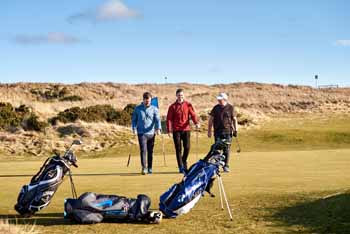
Are you seeing a different type of golfer at your venue now?
With golf initially being one of the few sports back in full operation, it rekindled interest in many former or very infrequent players. We survey our users regularly and the results tell us that the game is valued more than before for exercise and health benefits. We have also seen a greater level of family golf, perhaps a by-product of household restrictions and being released from lockdown.
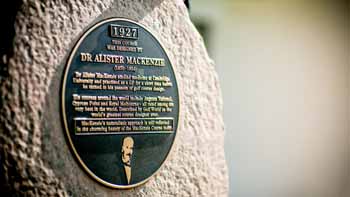
How have the non-golfing revenue streams at the venues, such as the bars and restaurants, been impacted in the last few months?
The clubs that are open are offering a restricted offer with reduced opening hours. They are trying to manage expectations and work within a revised financial plan.
Do you think the golf industry will permanently be changed as a result of what’s happened and, if so, in what way?
As a club member myself [Royal Aberdeen], I can see some differences that will probably be around for some time; some good, some bad. A big positive is that the club now offers full seven day online booking via BRS. This has enabled better time management and improved the planning for games.
At Golf Aberdeen we are pushing the pre-payment and our online booking option, although we are still taking bookings by phone and payment on the day, as some prefer that – it is important that we offer that to the older players who are less confident with digital life.
The restrictions have also led, by necessity, to more car park golfers and I do worry that members will drift from the routine of a pre and post golf visit to the clubhouse, particularly as most now arrive ready to play. That aligned with three to three and a half hour rounds has knocked a fair amount of time off a typical day’s golf and many will want to continue with that format.

There’s been a recent trend in the industry for golf clubs to sell some of the land they own to housing developers. As Aberdeen is a sought-after city, is this something you would consider?
Fortunately, the city has a great golfing heritage and the quality of our public golf courses and the numbers playing, bucks the UK trend. The courses are in public hands, so not at risk of a members’ sell-off. The locations and courses are iconic, especially when designed by celebrated golf architects like Braid and MacKenzie, so for a variety of reasons it would be very difficult to see planning consent for any form of development.

Do the venues offer alternative versions of golf, such as footgolf or speedgolf?
We have a footgolf course that has been very popular and is a great family and group activity that has made good use of a redundant 18-hole pitch and putt course.
The clubs run their own competitions, open days and events and these are planned at the golf forum and organised with our golf manager. The clubs have done speedgolf, nine-hole versions and night golf as a way of trying something different.

What do they do to attract women and children?
All courses are fully accessible both from an equality and pricing point of view. We have worked with clubs to encourage linkages with schools and junior development, through Tri-Golf and Scottish Golf’s Get into Golf programme. We also offer free golf for kids that complete a coaching programme and two clubs also play their part with free membership. This has had some success.

Only one club has done well with recruiting female players, which is historical. We are pleased to see the ladies’ section thriving at Hazlehead and we will continue to work with the clubs to attract more women to the sport.















Municipal golf in most areas has a very bright future, if…there is “buy-in” from many and more in the community !!! City fathers, Town officials, council members and all other bureaucrats can’t do it alone!! Collaboration must be part of any strategic plan !!
An excellent article, municipals will always have their place in the golfing community.